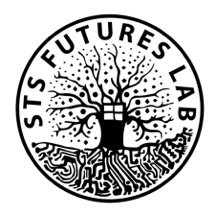
Critical Imagination at the Intersection of STS Pedagogy and Research
*This post was co-authored by Emily York and Shannon Conley* In 2017, we established the STS Futures Lab—a space to critically interrogate plausible sociotechnical futures and to develop strategies for integrating pedagogy and research. But why a lab, and why a ‘futures’ lab? In a broader societal context in which futures thinking and futures labs are often subsumed within innovation speak, entrepreneurialism, and implicit bias regarding whose futures matter, it might seem counter-intuitive to establish a futures lab as a space for critical pedagogies. And yet, it is precisely because of our concern with the politics and ethics of technological world-making that we are inspired to intervene in this space. A futures lab, as we conceive it, is a space to cultivate capacities for critical and moral imagination that serve to check dominant assumptions about the future. “In the marketplace, the word creativity has come to mean the generation of ideas applicable to practical strategies to make larger profits…. I don’t use it any more, yielding it to capitalists and academics to abuse as they like. But they can’t have imagination.” (Ursula K. Le Guin, “The Operating Instructions”) We believe STS pedagogies are at their best when they are at the same time critical pedagogies—connected to the politics of knowledge production (Freire, 2018), and congruent with education as a ‘practice of freedom’ (hooks 1994, 4). Moreover, STS understandings of the messiness of knowledge production align well with reflexive practices of learning with our students in the classroom. However, to develop critical STS pedagogies that effectively engage our students, we have to start where we are in terms of our particular location and the students with whom we are working. The STS Futures Lab is an example of how critical STS pedagogies can, and perhaps must, emerge as a situated practice. One of the factors that makes STS pedagogies such a rich and varied set of practices is that they are developed and implemented in a wide array of disciplinary, institutional, and geographically diverse spaces, often heavily shaped by these spaces as faculty attempt to make material relevant to their students and aligned with learning objectives. This is to say, the very factors that constrain approaches to implementing critical STS pedagogies also constitute an opportunity. (read more...)
